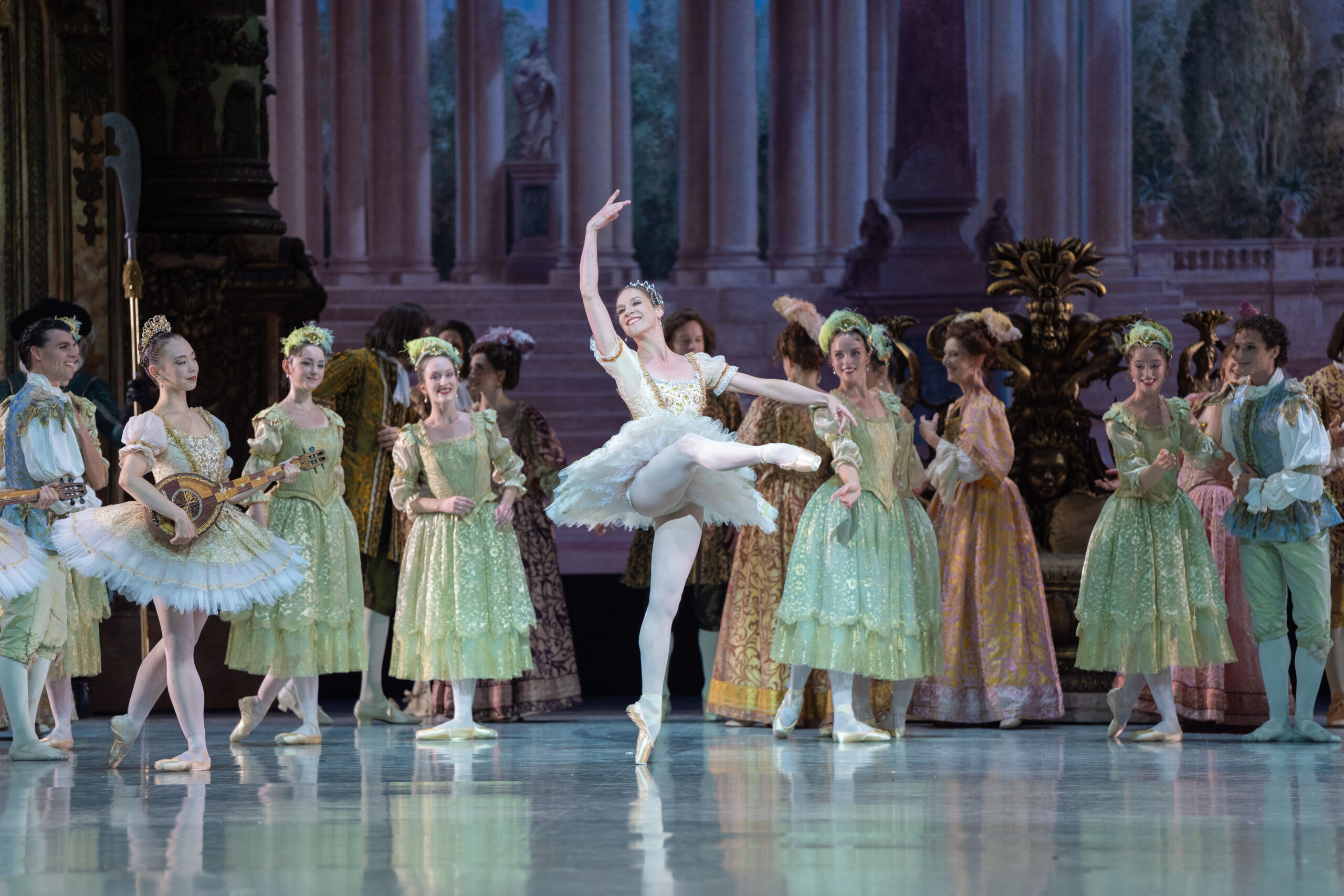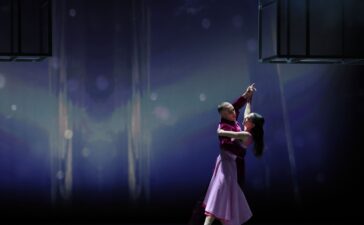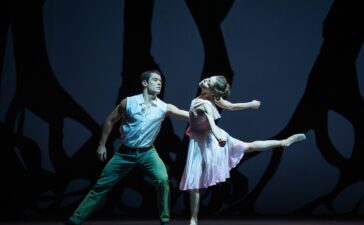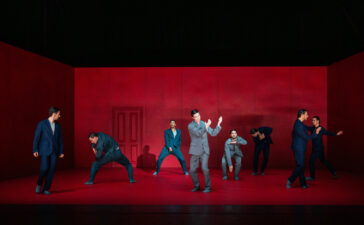(🇬🇧)
This revival of the quintessential ballet at the Paris Opera unfolds as a display of magnificence and psychological complexity, while beneath the surface lies a woven drama of hierarchy and restrained passion. And, as Aurora, Valentine Colasante reigns supreme – her performance an exquisite blend of finesse, elegance, and emotional depth, bringing fresh energy to Nureyev’s interpretation
By Alessandro BIZZOTTO
Rudolf Nureyev’s The Sleeping Beauty at the Paris Opera Ballet is no mere fairytale revival, but an exercise in theatrical grandeur and courtly ritual. Absent from the company’s stage since December 2013, this vast production – spanning a prologue and three full acts – is a display of classical opulence.
It returns as a reminder of Nureyev’s approach: honouring Petipa’s structure while enriching it with psychological realism and social nuance. King Florestan’s court is no dreamlike fantasy but a rigid hierarchy, where power weighs heavily and etiquette is enforced with chilly rigour. Even the central conflict between Carabosse and the Lilac Fairy becomes an ideological duel, with Carabosse conceived as an elegantly sinister figure who conceals her deadly needle in her coiffed bun, a subtle but chilling symbol of treachery masked by sophistication.
This flamboyance is married here to a refined French elegance, preserving Petipa’s spirit while being vividly brought to life on stage at the Paris Opera through sets and costumes designed in 1997 by Ezio Frigerio and Franca Squarciapino. The stage itself is awash with a profusion of classical columns, capitals, leafy garlands, and statues inspired by ancient motifs, all bathed in a palette of gilded tones and an endless range of shimmering pastels.
This scale and seriousness make the prologue especially telling: it’s not decorative pageantry but a societal drama in miniature, complete with pantomime, bustling courtiers, and a satirical master of ceremonies fussing over protocol.
The ballet opens with the celebration of Aurora’s baptism, laying the groundwork for betrayal and fate. The entrance of the seven fairies in their signature ensemble, which Nureyev imagines like cut-paper dolls, precisely arranged, is one of the production’s masterstrokes. At the Paris Opera, led by the exquisite first soloist Hohyun Kang, the effect is sharply disciplined; rarely does one see such immaculate unison as Tchaikovsky’s music swells to accompany their interlaced movements. Kang herself impresses with statuesque balances, holding a second-position extension seemingly suspended in mid-air, before unspooling a masterclass in fluid diagonals and a crystalline coda.
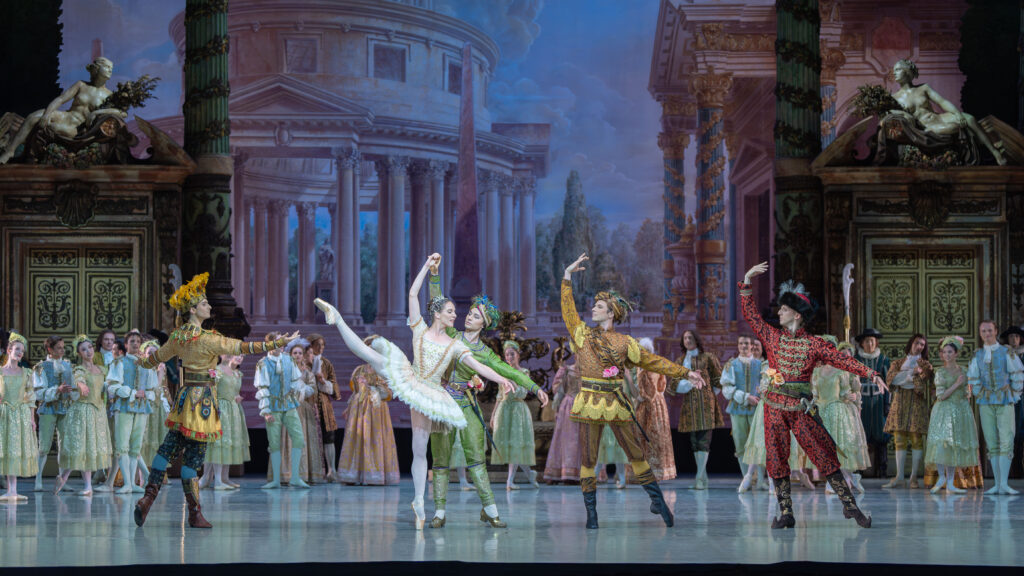
Valentine Colasante with (from left) Léo de Busserolles, Alexandre Boccara, Mathieu Contat, and Matthieu Botto © Jesús Vallinas – OnP
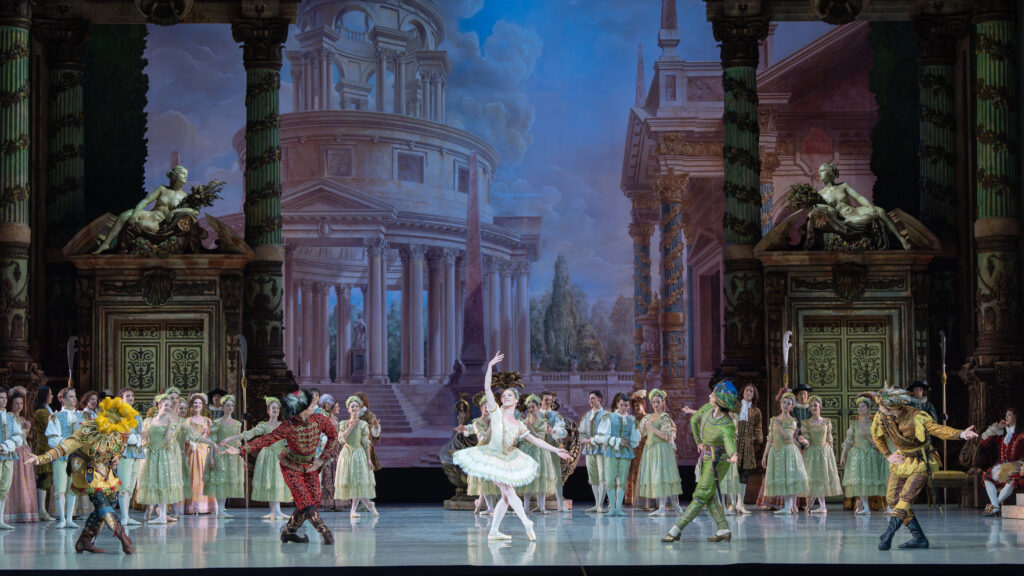
Valentine Colasante (centre) in The Sleeping Beauty © Jesús Vallinas – OnP
Meanwhile, the opposition between Carabosse and the Lilac Fairy emerges as pure pantomime art: stylised, legible, unashamedly theatrical, carving out a moral universe in which good and evil are given sharply contrasting, richly expressive forms.
If the prologue is all court ceremony and glinting allegory, Act One jumps forward to Aurora’s coming of age, celebrated with aristocratic splendour on her sixteenth birthday. The entire court is gathered to watch the princess bloom: the evening unquestionably belongs to principal dancer Valentine Colasante, who reigns over the Opera Bastille stage with the unassailable authority of a true étoile. She commands the role of the princess, hypnotic from the moment she arrives. There’s an alert, lively grace to her entrance: a knowing innocence, the eager anticipation of youth crowned with the poise of an imperial ballerina.
Then comes the notorious Rose Adagio, ballet’s ultimate ordeal of balance and control. Colasante tackles its first four static balances with unflinching calm, offering her hand to each prince with an almost uncanny serenity. Her double turn à la seconde, executed with surgical precision, is dispatched like a challenge thrown at the audience. Her final equilibrium, perfectly sustained, earns premature applause that erupts before the music has even concluded, sending the Bastille audience into delighted uproar.
When her variation follows, it’s textbook classicism elevated to art, every step carved in crystalline detail, even though the Paris Opera orchestra maintains a rather slow tempo. Then she throws herself into the closing manège with an intoxicating velocity that wipes any trace of fragility from the character.
But Valentine Colasante is just as riveting in Aurora’s collapse. When Carabosse emerges from the crowd in disguise, the mood shifts with unsettling subtlety. At first Aurora seems pleased by this unexpected gift. Then, as she pricks her finger, the smile freezes, giving way to confusion and finally fright. Colasante lets this progression unfold with relentless exactness: no hysteria, just a growing terror behind her eyes. There’s a chilling vacancy as she falters, no longer mistress of her body, drawn helplessly toward collapse. It’s not death, of course, but an enchanted sleep – salvation secured only by the Lilac Fairy’s intervention. Yet the unease lingers, a reminder that beneath this polished court spectacle, true menace always lurks in the wings.
The evening after, principal dancer Léonore Baulac faced the daunting task of following the near-flawless precedent set by Colasante. Her technique leans toward a more cautious approach in the Rose Adagio: the balances are delivered with flowing brevity, prioritising safety over flourish. The much-anticipated double turn à la seconde is abbreviated, halting midway, shifting the emphasis onto a fresh, youthful spontaneity and a late-adolescent vulnerability.
Baulac’s variation continues in this more restrained vein. Yet it is in Aurora’s prick that her interpretation finds a compelling voice. Her eyes flicker with subtle, almost horror-tinged shadows, evoking a nightmare-like anguish that adds raw emotional intensity to the moment. It’s a glimpse beneath the surface, offering a different, unsettling kind of depth.
With this version of The Sleeping Beauty, beneath the glittering veneer of courtly splendour lies a story of profound solitude and restless yearning. In Act Two, Prince Désiré emerges not as a fairy-tale hero but as a quietly searching soul, burdened by the weight of expectation and a vague longing for something just out of reach. First soloist Thomas Docquir’s portrayal favours subtlety: his technique is pure and lithe, revealing a prince who moves with natural ease yet unmistakable purpose – an elegant tension between hesitation and resolve.
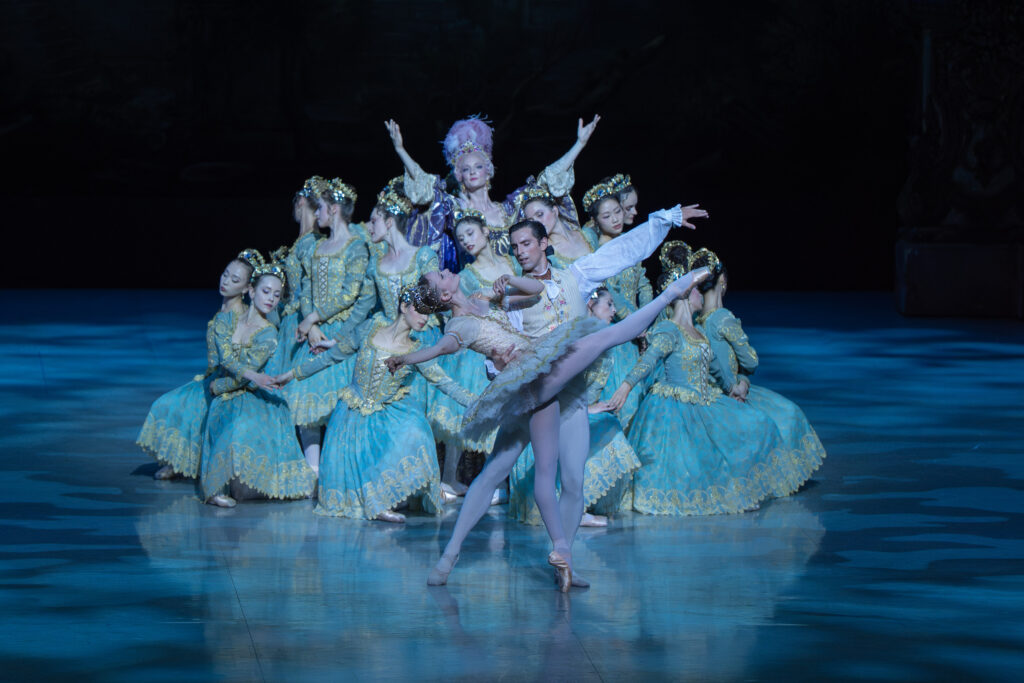
Léonore Baulac and Marc Moreau in The Sleeping Beauty © Jesús Vallinas – OnP

Valentine Colasante (centre) in The Sleeping Beauty © Jesús Vallinas – OnP
When the Lilac Fairy conjures Aurora’s vision, Désiré’s reaction is far from the usual melodramatic swoon. Docquir captures a genuine surprise, an almost magnetic pull towards the glowing apparition, a force that propels rather than paralyses. And Valentine Colasante, as Aurora’s ethereal vision, embodies this otherworldly allure with effortless finesse; she navigates Nureyev’s demanding variation with joyful mastery, turning technical challenges into moments of airy flight. Her sweeping diagonal, crowned by powerful turns, feels like a triumphant ascent, a moment of light and longing suspended in time.
The act closes on the awakening scene, where tradition meets modernity. Docquir and Colasante infuse the classic “happily ever after” with fresh immediacy; two young souls grounded in their era yet timeless in their connection, breathing new life into a well-worn fairy tale.
With Baulac and her partner, principal Marc Moreau, the Act Two energy takes on a different tenor. Baulac offers a serenely radiant Aurora, her smile a gentle beacon throughout, but closes the final diagonal with a single turn instead of the usual double, opting for fluidity over bravura.
Moreau, meanwhile, brings a certain commanding charisma, at times leaning into a self-conscious theatricality that draws focus but risks eclipsing the role’s subtler demands. His dancing favours broad effect over precise finish, with an energy that feels slightly more posed than instinctively smooth. If Docquir’s prince speaks of quiet, searching sensitivity, Moreau’s approach is altogether more demonstrative, a presence that asserts rather than explores. The contrast between the two evenings highlights the fine line between youthful nuance and theatrical display.
The third act celebrates the wedding and the fulfilment of a long-awaited love. Years have passed, and the court’s fashions reflect the passage of time. The festivities unfold through dazzling divertissements – from the pas de cinq of the precious stones to the showcases of the Bluebird and Princess Florine.
It is in the pas de deux of Aurora and Désiré that classical ballet reaches its pinnacle – the triumphant heart of the act and the embodiment of classical ballet’s enduring power. Valentine Colasante shines as a powerhouse of charisma; her mastery is nothing short of adamantine. Thomas Docquir stands as her steadfast partner, his assured support providing the perfect foil to Colasante’s radiant virtuosity. His variation sparkles in its own right, the heroic tours en l’air confidently closed in fifth position. In the variation, Colasante’s Aurora is the very apotheosis of the classical ballerina – where flawless technique meets an almost regal presence, making her performance a rare blend of strength and lyricism.
The evening after, Léonore Baulac and Marc Moreau offer a contrasting take. Baulac’s Aurora is harmonious, while Moreau supports with eager impeto. Yet where Docquir’s tours en l’air are assured, Moreau’s lack the same clean finish. Together, Baulac and Moreau find anyway a dynamic connection – a fitting, if less dazzling, counterpart to the night before.
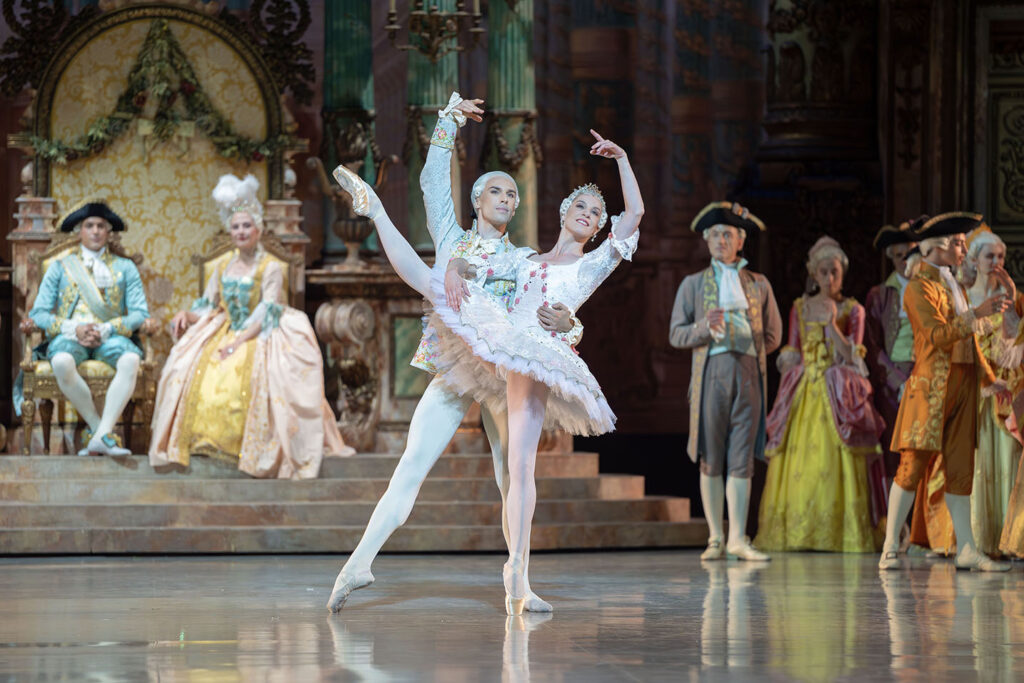
Valentine Colasante and Thomas Docquir in The Sleeping Beauty © Jesús Vallinas – OnP
A production of such scale lives or dies on the depth of its ensemble, and here the supporting roles deliver detail and personality in abundance, proving just how much Nureyev’s The Sleeping Beauty depends on the company’s collective strength.
In Act One, Laudeline Schor, a quadrille, nails the third Fairy variation with precision, charming but never complacent. The following night, soloist Clara Mousseigne navigates the fifth Fairy variation with a quiet, unyielding resolve. Her performance, firmly anchored yet unshowy, walks a fine line between controlled power and elegance, never once tipping into the realm of the ostentatious.
On the night of Colasante and Docquir, soloist Elizabeth Partington’s Bluebird pas de deux sparkles with crystalline clarity and assured turns, while coryphée Théo Ghilbert injects a spirited vigour that keeps the momentum fresh and unpredictable. Meanwhile, Fanny Gorse’s Carabosse resists caricature – she’s a study in elegant menace, a courtier whose polished veneer thinly conceals a quiet, deliberate malice.

